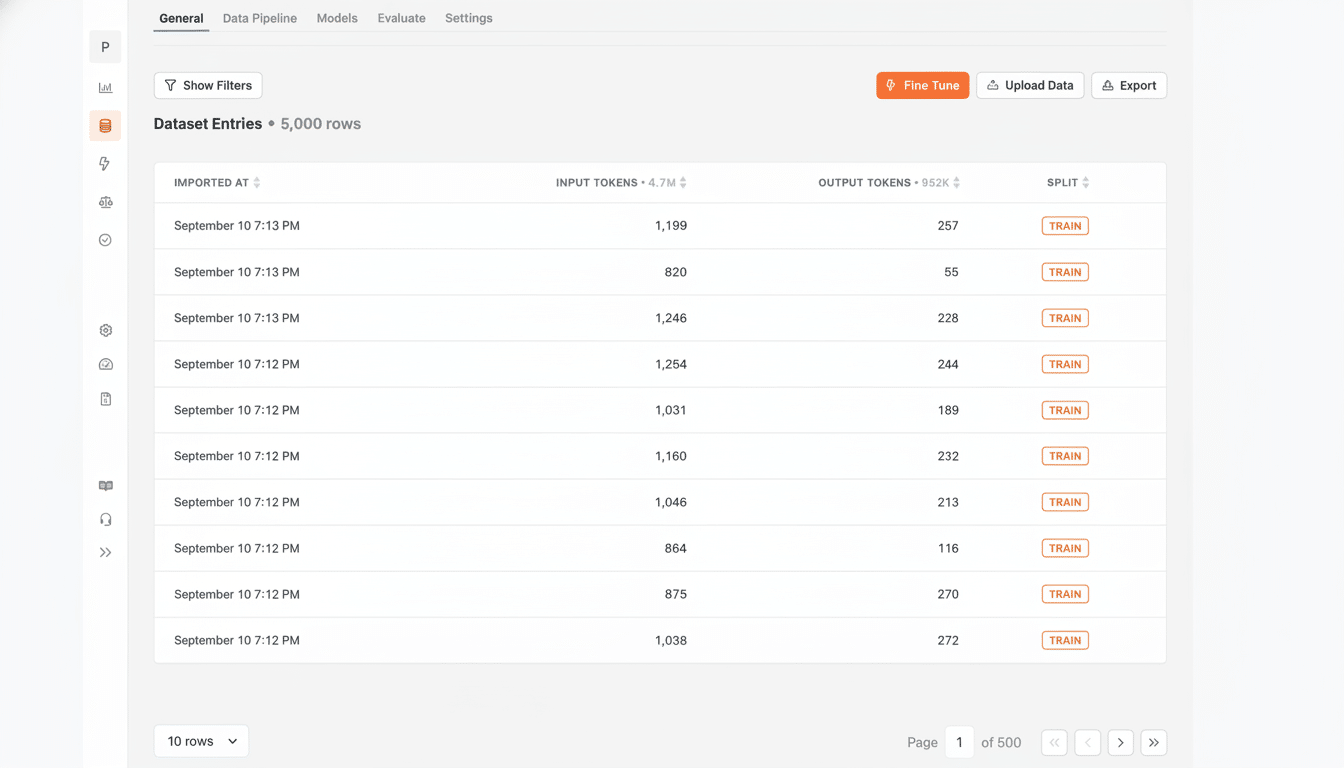CoreWeave is acquiring OpenPipe, the Y Combinator–backed company famed for training and tuning AI agents with reinforcement learning to perform enterprise workflow tasks. Financial terms were not disclosed, and OpenPipe’s team and customers will move to CoreWeave in the deal.
The move further leverages CoreWeave’s expansion beyond core GPU infrastructure into higher value-added software and tooling that provides a pre-packaged way to build, train and run domain-specific agents on the same cloud where the heavy lifting is done.

Why OpenPipe matters
OpenPipe uses reinforcement learning in order to specialize general-purpose models into task specialists. The open source Agent Reinforcement Trainer (ART) assists teams in instrumenting agent behavior, specifying reward functions, and iterating rapidly with live feedback from users and labeled data. In practice, this allows an agent working on support tickets, underwriting checks, or compliance reviews to tune for accuracy, tone, and latency targets of any given business.
Reinforcement learning is no longer the exclusive province of frontier labs. The AI Index at Stanford’s HAI points to how RL-based fine-tuning can make material differences in performance on narrow tasks given a well-designed feedback signal. For businesses, the appeal is practical: Better results, fewer escalations and more predictable levels of service than a canned model you access via an application programming interface.
OpenPipe got quick traction from marrying that with dev friendly workflows. Its backers—Costanoa Ventures, Y Combinator, as well as a list of industry operators, like Google DeepMind’s Logan Kilpatrick, GitHub co-founder Tom Preston-Werner, and GitHub Copilot Co-Creator Alex Graveley—give a sense that the product struck a chord with practitioners who were building things not only real systems, but not just demos.
CoreWeave scales the AI ladder
CoreWeave made a name for itself by providing AI developers and research labs with high-density clusters of Nvidia GPUs. Demand for H100-class compute outpaced supply, making the company a go-to resource for anyone looking to scale up their training runs and high-throughput inference. Browse industry analysts Omdia among others have observed that as cloud providers capturing the AI explosion they are more and more competing not only on chips but on the software ecosystems that accelerate how quickly customers can ship production systems.
This acquisition extends that playbook. Having previously acquired Weights & Biases, CoreWeave is putting together a toolkit that covers experiment tracking, model training, agent reinforcement, deployment—supported by the same fleet that fuels the world’s top AI labs. It’s a well-trod path in enterprise infrastructure: start as compute, grow into opinionated tooling and bundle for ease of use and lock-in. Databricks’ acquisition of MosaicML and Nvidia’s acquisition of Run:ai are of a piece with this trend of infrastructure and AI worklflows converging.

Strategically, in-sourcing OpenPipe means that CoreWeave can now go after workloads that had been one layer above their GPU-contract. Each reinforcement learning loop — gather feedback, score behavior, update policy — is absolutely dominating in compute. If CoreWeave can reduce the time between “we have logs” and “we have a tuned agent in production,” not only does it get software margin, but it pushes utilization on the core infrastructure.
What customers could gain
What we offer Mid-market and enterprise teams data pipeline and feedback tooling from OpenPipe MLOps ‘scaffolding’ from Weights & Biases The ability to iterate quickly with elastic GPU capacity. That mix can help reduce the time-to-value for projects like contract triage, revenue operations assistants and safety-review agents, where teams must hone behavior closely around company-specific policies and datasets.
There’s also a cost argument. By training a specialized agent to manage the top workflows of a company, the trust is reduced from the largest frontier models for each request. The McKinsey research cited in a previous section has shown that the alignment of model choice with workload specificity is one of the most important levers in controling the unit economics of generative AI – specialization can drive down per-interaction costs while improving precision where it matters.
Risks and what to watch
The integration brings up questions that are common for an infra provider that is moving into app-layer tooling. Customers will want clarity on data governance, model neutrality and portability: Can agents trained with OpenPipe be downloaded or run on other clouds, for example, if necessary? Those are the very considerations the NIST AI Risk Management Framework recommends when deploying learning systems in the field: traceability, transparency, and sound evaluation.
Another factor is ecosystem diplomacy. CoreWeave counts both leading model companies and startups as its clients, sowing the seeds for its own agent-training layer could allow it to get its hands on customers that are also being courted by standalone platforms. If done well, that nearness becomes a conduit advantage. Mishandled, it threatens to codify lock-in at a time when many CIOs are running multicloud and model-agnostic strategies.
The short-term logic is simple: reinforcement learning for agents is compute-hungry, and OpenPipe provides CoreWeave with a straight on-ramp to that demand. If the company can marry good GPUs alongside opinionated agent-training workflows and instrumentable business outcomes, this acquisition will appear less like an experiment and more like a roadmap for the next stage of the AI cloud.

